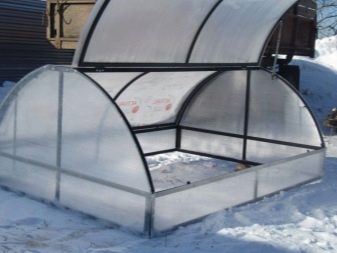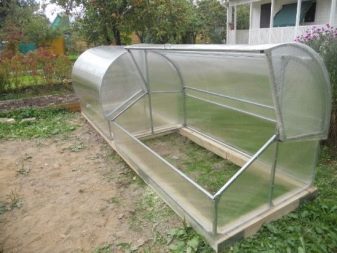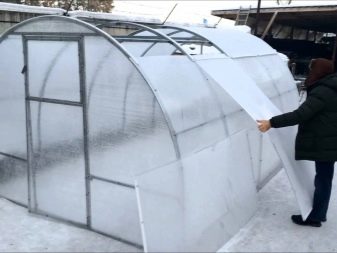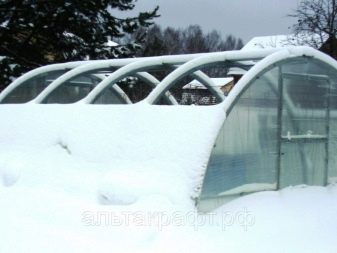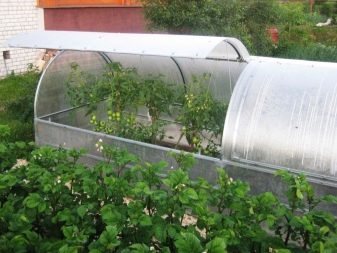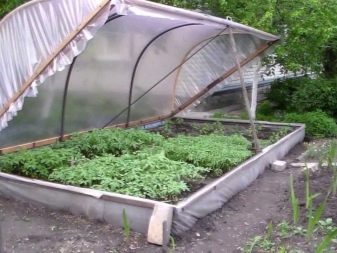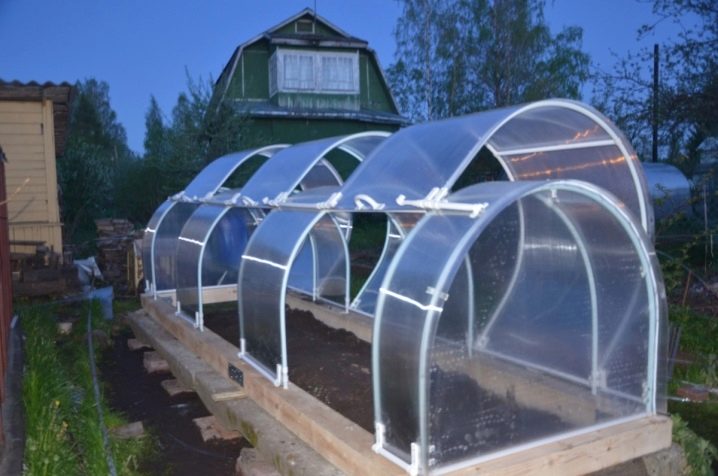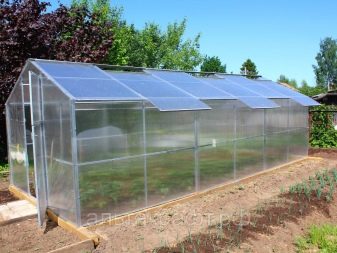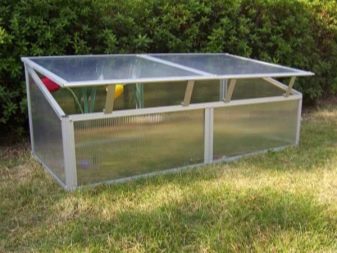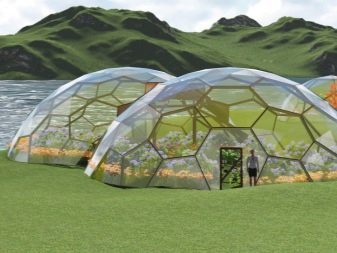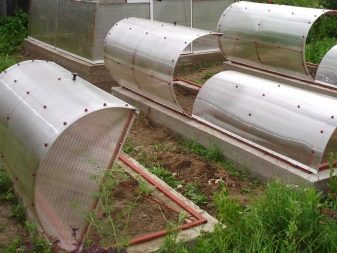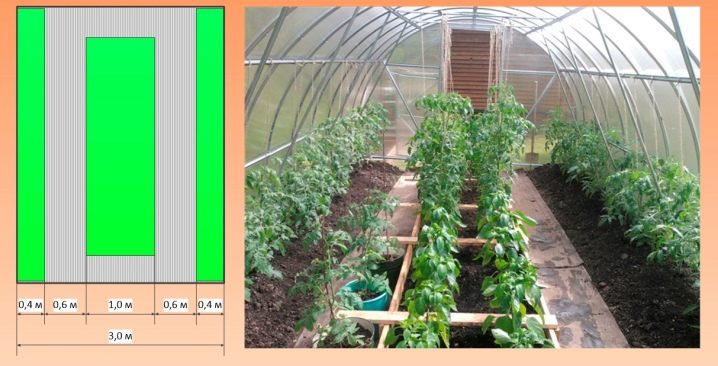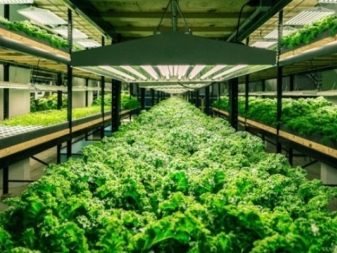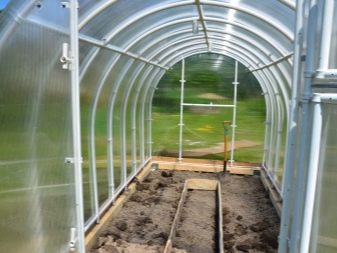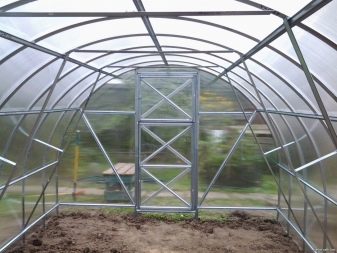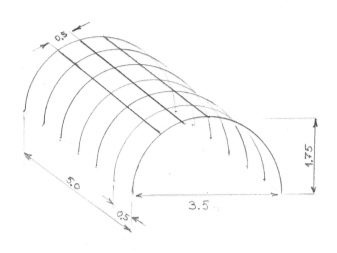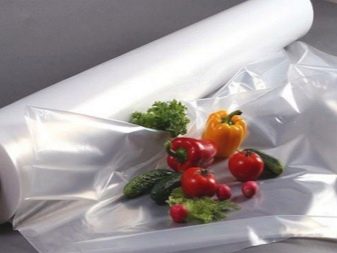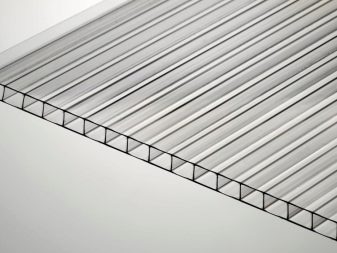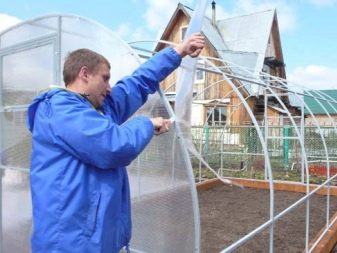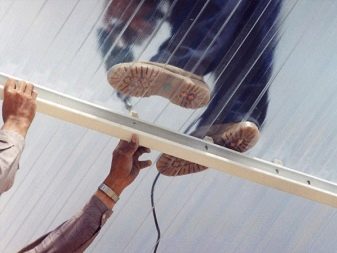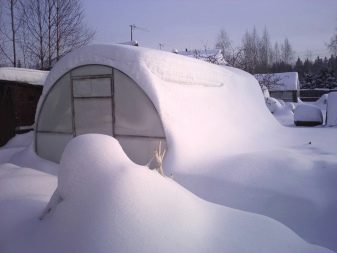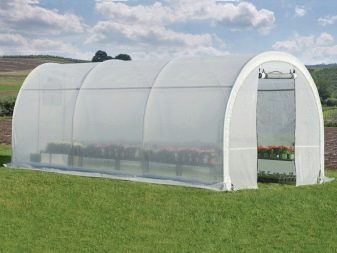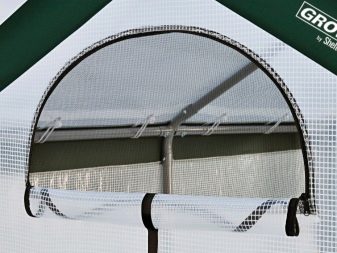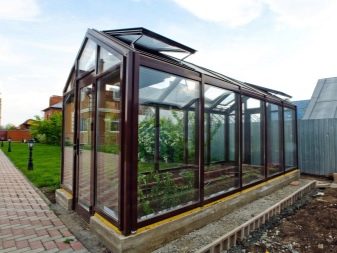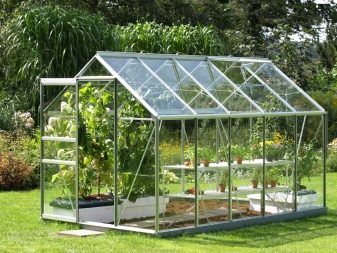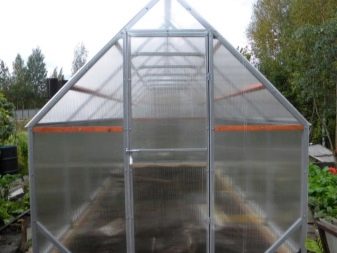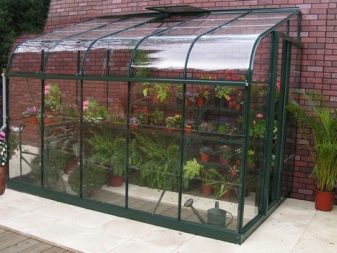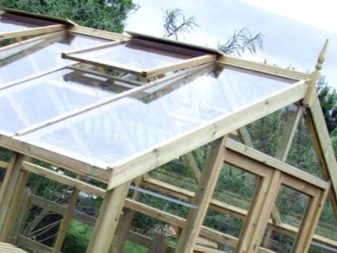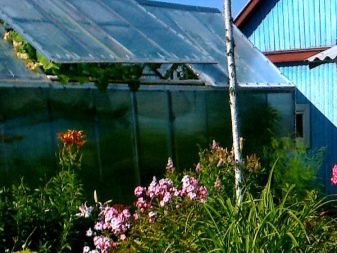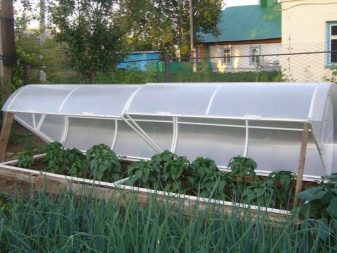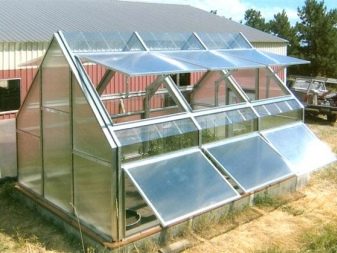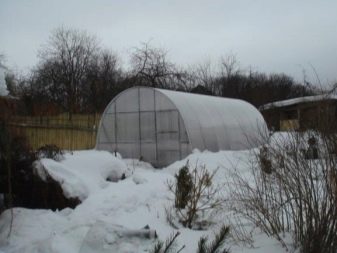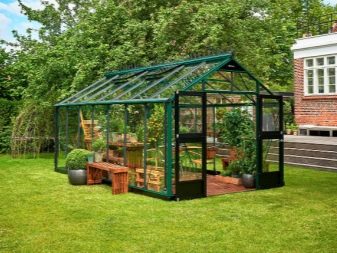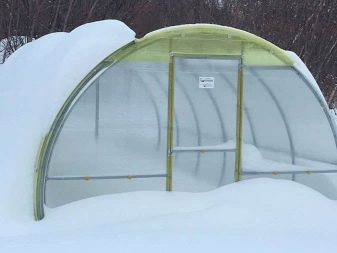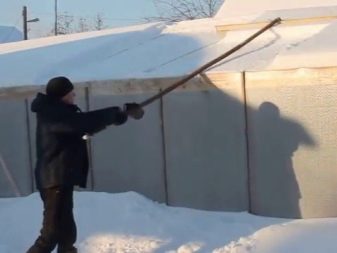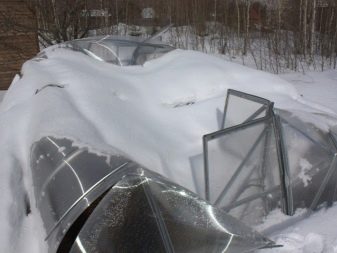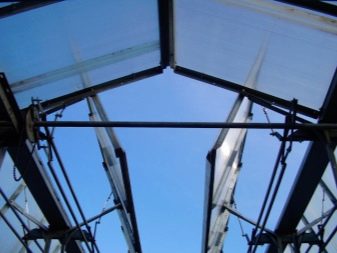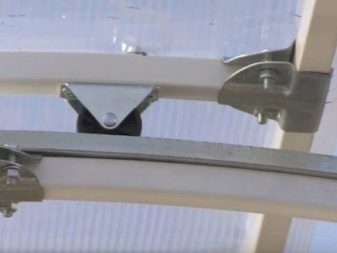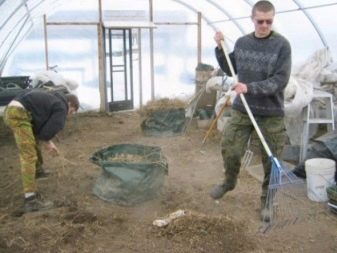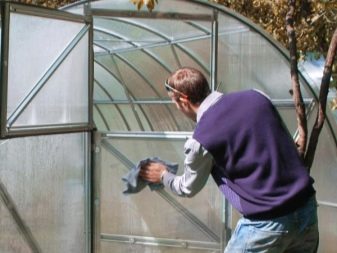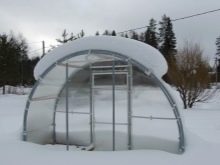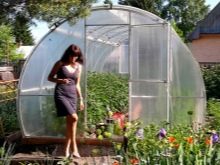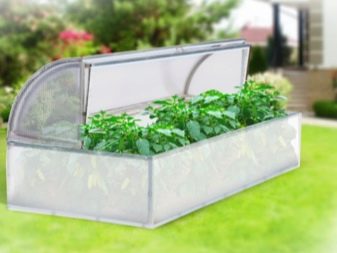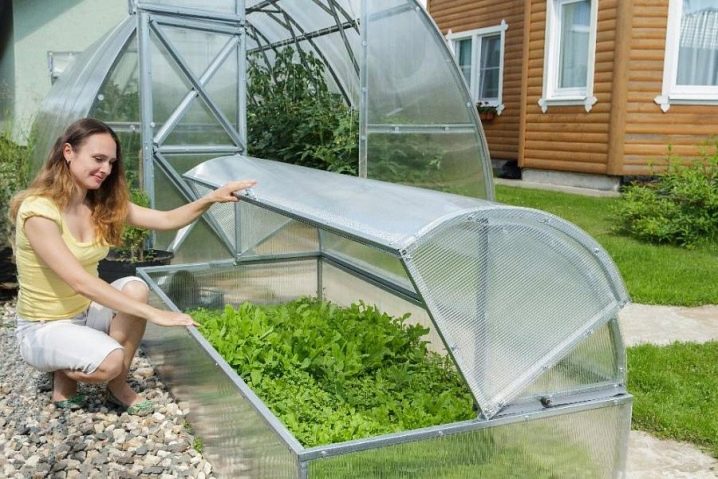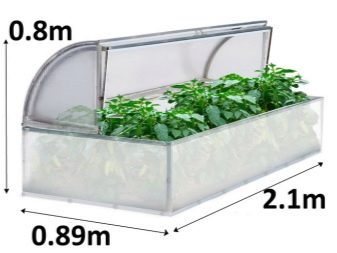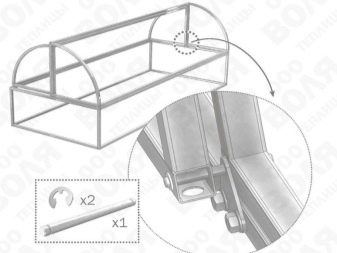Types and features of greenhouses with opening roof
Growing vegetables, herbs and other crops is not an easy task, as certain climatic conditions are necessary for normal plant growth. Therefore, many landowners prefer to install greenhouses with opening roofs. They not only allow the inside of the structure to maintain the required level of humidity and heat, but also are easy to assemble. Due to the huge choice of shapes and sizes, such structures can be placed on sites of any area.
Features and types
The greenhouse with opening roof is a unique design that is very popular and in demand in agricultural activities.One of its main components is the roof, which in winter has to withstand snow loads and wind. Due to the negative impact of external factors, it can be damaged and become unsuitable for further use. Therefore, its frame is made of durable material that has a collapsible look.
In winter, the roof is collected, and dismantled in the fall.
Such greenhouses are designed for the early cultivation of seedlings, greenery and other vegetable crops. The structure can reliably serve for more than one year, since it is equipped with a sturdy frame, sheathed with canvas or film, there are also designs with removable sides. Often cover greenhouses and polycarbonate, which retains heat well inside the building and passes the desired level of light for plants. Thanks to the removable roof in the greenhouse, it is possible to control the thermal regime, and when it gets hot in it, the structure is opened. If this is not done, the culture due to excessive evaporation of moisture may turn yellow and abyss.
For home growing plants, as a rule, greenhouses of standard size 2x4 m are installed.Depending on the structure of the structure, there are several types.
- "Cabriolet". The roof in such a structure is not removed, but leans back or slides down the slots. Externally, the frame resembles a breadbasket. If necessary, you can fully open the roof or only some of its parts.
- "Butterfly". The greenhouse has the form of an arch, its roof consists of several parts attached to the walls, which, when opened, rise along with it. Outwardly, it resembles butterfly wings. If you plan to install a large structure, then this greenhouse model is recommended to be divided into separate segments, this will protect the crop from hypothermia.
- "Matryoshka". It is similar to the “butterfly”, but, unlike the previous version, its details are shifted to the sides. Due to the unique structure in the greenhouse, it is possible both to completely open the space and leave small areas for ventilation. This construction does not require installation of the foundation, it is easy to assemble and easy to transport.
Shapes and sizes of construction
To date, there are many models of greenhouses with opening roofs, which differ from each other not only in design features, but also in shapes and sizes.
Most often for the cultivation of crops choose the structure of several forms.
- Arched. The framework of the structure has the form of a semicircle, so moisture is evenly distributed inside it, and condensate is not collected on the walls, but flows down. For ease of use, such greenhouses are divided into segments that connect the top of the roof.
- Triangular. Greenhouses are covered with a gable roof, which externally forms a triangular shape. Each of the planes can independently open.
- Flat. The configuration of the assembly structure resembles a greenhouse. The roof in this case is single-pitch; it can be opened and closed at any time. The only drawback of the structure is that due to its flat shape, precipitations constantly accumulate on the roof.
- Dome. The design is made of triangular elements, each of which is sheathed with a special material. Thanks to its convenient structure, the roof in the greenhouse can be opened completely and partially.
Many gardeners prefer to build greenhouses with their own handsThis allows not only to save money, but also to choose a convenient option for construction using an individual project.In order to independently install the structure, you need to choose the optimal dimensions for it. Usually for the installation of greenhouses using standard indicators.
- Width. Not only the convenient placement of plants depends on this value, but also access to the space for their care, in a spacious room it will be comfortable to work and move. The width of the building is also influenced by the width of the doors, which can not be less than 56 cm, the width of the racks, in addition, a small passage of 60 cm should be provided between the racks. On this basis, the optimal width indicator for a greenhouse is 2.4 m. Depending on the design, dimensions can change, you can install wide designs and place several racks in them on both sides, it all depends on the needs of the gardener.
- Length. It may be different. Typically, the standard length of greenhouses is 120 cm, as it corresponds to the size of polycarbonate sheets, which is often used for frame plating. When creating a design project, it is also important to consider the number of pallets placed on the racks. Trays are traditionally produced in dimensions of 28 × 53 cm, having calculated their number, it will be possible to easily determine the desired length of the structure.It is worth noting that in long greenhouses it is difficult to maintain optimal conditions for growing crops, so it is best to give preference to small facilities.
- Height. It depends on the type of construction of the greenhouse and the shape of the roof. As a rule, the height should not exceed 180 cm. If it is planned to plant fruit trees and tall plants, then the project is created individually, and the height is made larger.
Coating material
For covering greenhouses with an opening roof using a variety of building materials. Polyethylene film is very popular among gardeners; it is characterized by high strength and long service life, which can reach up to 6 years. Distinguish between normal, warm, sun-resistant and reinforced film. In order not to damage the material, it should not be too tight when trimming, and the sharp corners and points of contact with the frame should be covered with special protection. It is inexpensive film, and due to the fact that it is able to transmit light well, it can be applied in several layers.
Not bad proved as a finishing material and cellular polycarbonate. It has high strength, if they sheathe the greenhouse, the design can be operated for many years, and enjoy a great harvest. In addition, the material is characterized by heat preservation, it is not inferior in its properties even to glazed structures. It is produced with a cellular structure. In addition, polycarbonate consists of lower and upper layers, between which there are hard edges, they let the sun's rays in different directions, scattering them at the right angle.
Recently, many manufacturers produce polycarbonate with unique properties, thanks to which the material passes only "useful rays" and prevents the penetration of ultraviolet radiation. In addition, it has a high impact resistance and is well tolerated not only by hail, but also other mechanical damage.
Polycarbonate sheets are easy to bend and get the desired shape, so you can use it for any kind of construction.
An awning is also used for covering greenhouses. This is a popular material, which is made from non-woven cloth, most often for the finishing of structures choose thermoselect, lutrasil and agryl.Although an awning is characterized by multifunctionality, it reflects the spectrum of light poorly. Therefore, a greenhouse equipped in this way will not be pleased with a large crop, since the heat inside the structure will be well preserved only during the day, and at night the plants can cool sharply. Awning is not recommended for greenhouses in which it is planned to plant early seedlings, it will not protect them from frost.
The most expensive material for covering greenhouses is glass. Such structures require the construction of a concrete foundation and the installation of a solid frame, but they are completely environmentally friendly and create an excellent microclimate for crop growth. In addition, the glass is not afraid of severe frosts, heat and can withstand a lot of weight.
Tilt angle: which one is better?
Before independently constructing a greenhouse, it is necessary to determine the type of its roof and the angle of inclination. Usually install a double or single roof, depending on this, it can vary in size and open in a different way. Dvukhskatny roofs are presented in many options of registration and are characterized by positive properties. For them, the optimum angle of inclination is 20-25 degrees, if it is made smaller,then the “slope” disappears, and a large angle of inclination, on the contrary, will make the roof high, and it will be cold inside the greenhouse.
Roofs with an optimal angle of inclination have several advantages.
- More light is transmitted. Due to proper inclination, the sun's rays are evenly distributed and release thermal energy.
- Do not delay the snow. Precipitation will not collect on the roof, which prevents it from being damaged by the weight load.
- Do not leak, dry quickly. Since the surface of the roof will always be dry, it will protect it from the formation of moss and dirt. Such a roof is easy to clean.
When building greenhouses, it is best to build the roof of the structure under a degree of 20-25 degrees.
This will not only extend the life of the facility, but will provide optimal conditions for obtaining high yields.
Advantages and disadvantages
Recently, greenhouses with a sliding and sliding roof have found wide application in agriculture. They are easy to use, easy to assemble and allow you to grow different varieties of crops.
Folding designs have the following advantages:
- the possibility of airing: regardless of the season, the roof can be fully or partially open and provide the desired movement of air flow;
- lack of draft;
- good lighting;
- protection of the roof from deformation;
- maintaining an optimal microclimate for plant growth;
- affordable price;
- possibility of installation on a land plot of any size.
As for the drawbacks, it is the only one in such greenhouses - low tightness. Therefore, it is undesirable to plant heat-loving crops in these structures. They are usually used for growing vegetables, berries, herbs and some types of mushrooms. In addition, it is possible to increase the tightness of structures using plating with special materials that will help to avoid penetration of cold air inside.
Use and care, reviews
Convertible greenhouses require compliance with certain rules of operation. The roof for the winter you need to fully push, and in the summer to collect. This condition is mandatory for all types of structures, regardless of their design features. Due to the fact that greenhouses sheathe modern materials, it became much easier to provide them with proper care.
Designs should be placed on the site where there is access to the light. Otherwise, due to lack of lighting, the plants will develop poorly, grow slowly and may die.At installation of the greenhouse it is important to resolve an issue with function of its roof in winter time. You need to know how it will be removed and cleared of snow. Of course, it will be difficult to do this in winter, but if you do not periodically ventilate the building inside, the roof can serve as an excellent place for the development of microorganisms that will further damage plants and cause various diseases.
In addition, it is important to constantly clean the roof and walls of the structure from snow. Although most of the finishing materials are of high strength, during the thaw an ice crust may appear on their surface, which can further damage their structure and cause deformation. Wet snow is considered especially dangerous, under the influence of its heavy weight the roof can sink and small gaps are formed that will break the tightness.
Therefore, the greenhouse should be well cleaned and ventilated, so that the necessary circulation of cold and hot air flows inside the building.
Many gardeners sheathe greenhouse structures with polycarbonate, it disperses the rays of the sun well, but the plants also need natural lighting, so the roofs must be moved or removed.It is also important to regularly check the work of the sliding parts, in case of need to tighten and lubricate the hinges, to clean the grooves from contamination.
Once a year such greenhouses require general cleaning, it is best to do this in the fall. For this, the soil is cleared of plant residues, interrupted and fertilized. The walls of the structure are washed with soapy water. It is worth paying attention to the fact that the use of chemical solutions is unacceptable, as they may contain aggressive substances that will damage the finish. Particularly carefully you need to wash the joints and seams of the structure, since it is there that microorganisms most often accumulate.
To date, there is a huge selection of models of greenhouses with an opening roof. The most popular among them are the “Matryoshka”, “Present” and “Nurse-clever” designs. They received a lot of positive feedback and have established themselves as the best facilities for growing plants. Such greenhouses are easy to use, easy to install and provide all the necessary conditions for the growth of crops.
Greenhouse "Lotos": description
"Lotus" is a unique greenhouse design. It is compactly structured, so it can be placed on sites with a limited area. This option greenhouses well suited for novice agronomists. The design is assembled from durable galvanized pipes, its frame is sheathed with polycarbonate, therefore, unlike other models, it is reliable in operation and serves for many years.
The roof of the greenhouse "Lotos" is fixed with the help of special leavestherefore it can be opened from any side. Thanks to this design, plants can be outdoors on sunny days, and in cool weather they can be easily hidden under a shed. “Lotus” is well suited for growing greens, cucumbers, tomatoes and crops that do not like a lot of moisture, as you can protect them with rain in case of rain.
The greenhouse has the standard dimensions: length 210 cm, width 90 cm, and height 80 cm. The design is considered to be of medium size, therefore it can be installed both in large and small areas. It should be noted that the greenhouse "Lotus" is inexpensive, it can afford even the novice gardener lover. A distinctive feature of the building is its technical design, due to which all the joints and seams of the structure are closed with special protective corners.Therefore, dirt does not fall on the surface of the finish and frame.
The package of greenhouses "Lotos" also includes additional seals, as well as frame fixer. Installation of the structure does not require pouring the foundation, installation work is carried out quickly, and if necessary, the structure can be easily assembled and moved to another place.
For information on how to properly assemble a greenhouse "Clever Girl" with an opening roof, see the following video.

